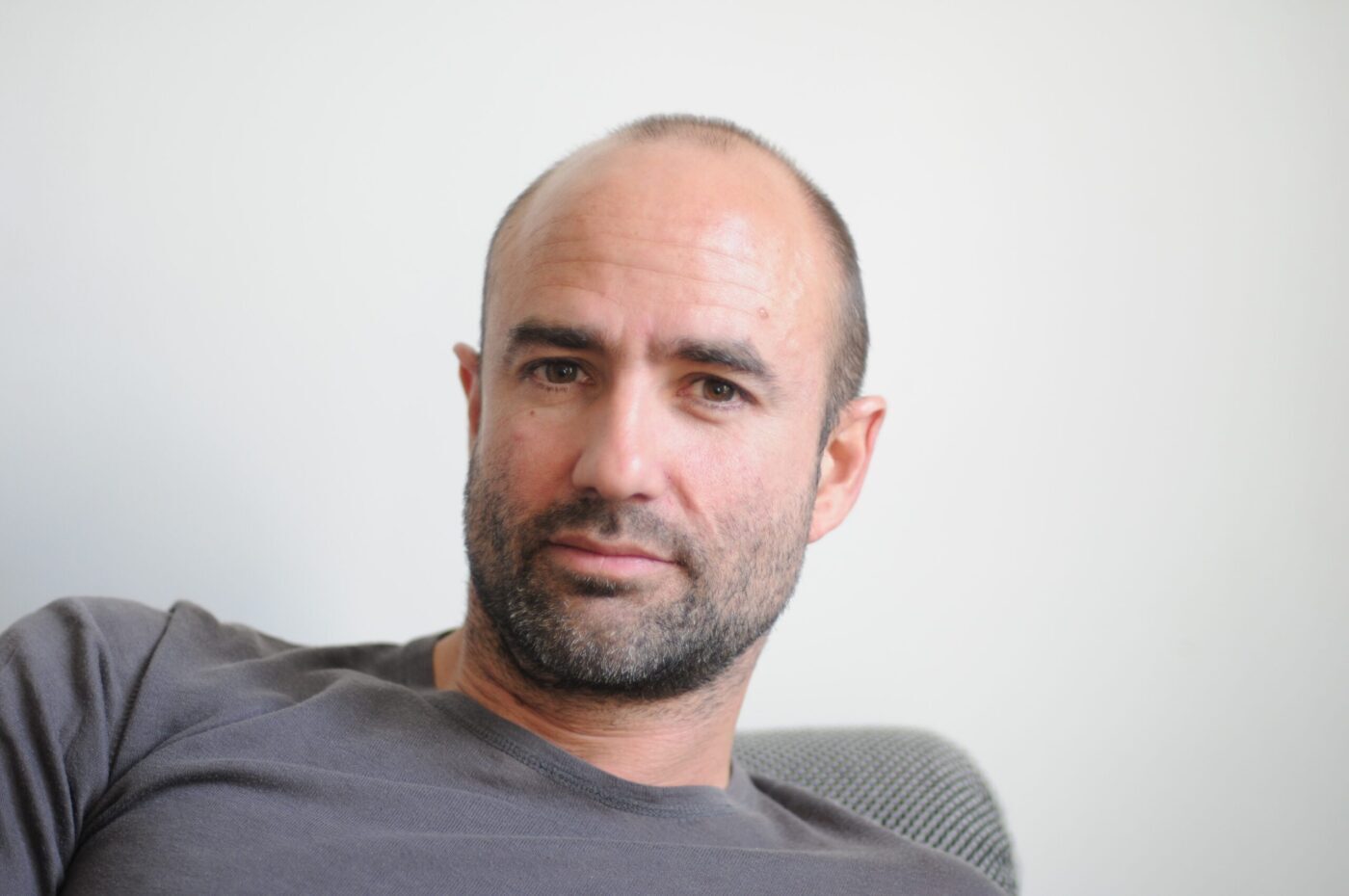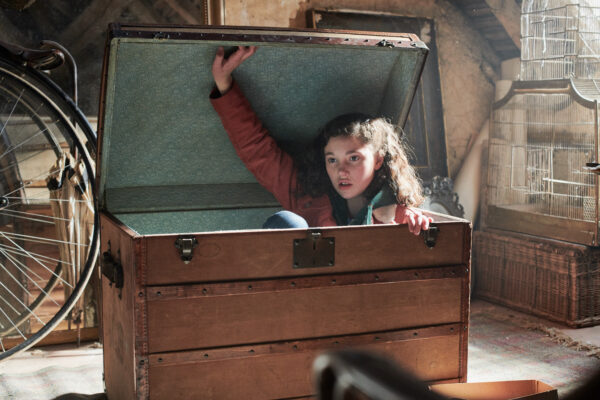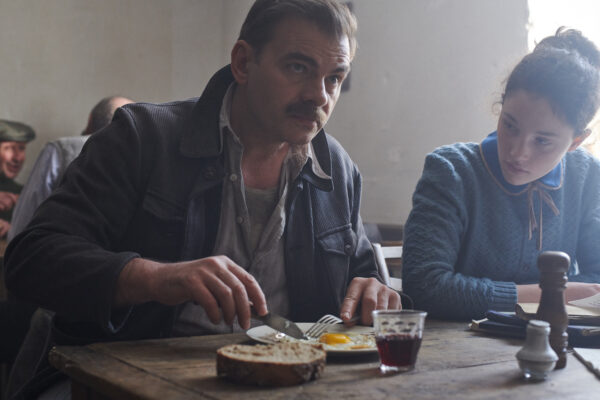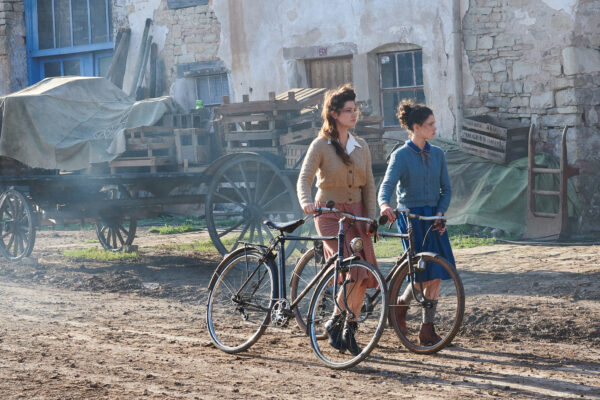“Realism allows me more than fantasy does“. Pierre Coré about ‘The Fantastic Journey of Margot & Marguerite’

Margot and Marguerite are both 12 years old, struggling with family, friends, and other issues. But one lives in 1942 during the war, the other one in 2020. They tumble into each other’s lives via a magical trunk. One more thing they have in common: an absent father. Despite the 70 years that separate them, they embark together on an adventure on the edge of space and time.
Gert Hermans: Is anger a crucial emotion at the age of 12?
Pierre Coré: In this film, this anger is mainly Margot’s privilege; Marguerite simply isn’t there yet. The age of 12 brings you in a shaky position, no longer a child but not yet adolescent. You have one foot in both worlds. Marguerite tilts more towards the childhood years, while Margot is revolting like a teenager. I love that passionate side of teenagers, their heightened emotions. They are angry with the established order, with adult compromises (which we prefer to call wisdom), and cowardice. At the same time, they are often egocentric, seeing the world only through their own filter and having a hard time adapting someone else’s point of view. Margot’s anger serves as her fuel, the energy that keeps her going and enables her to accomplish this mission.

These days we see a whole new type of fathers in young audience films. What is so typical about Margot’s father? And by the way: is graphic designer not a real job?
Coré: Oh yes, of course it is! My wife is one, you should see this as a little wink to her, though I’m not sure if she’ll consider it funny. I wanted to make young audiences reflect on the evolution of the fatherly role over the course of 70 years. Coming from 1942, Marguerite is quite distraught facing this “adolescent dad”, who refuses to grow up, wearing jeans and hoodies. She doesn’t quite understand, this is not the kind of authority she expects. However, dad will have to find peace with his fatherly status.

A film about time travelling can never be realistic, but still you made a great effort to make it look like that. How important was it to strive for realism?
Coré: To make your audience believe in magic you have to be as realistic as possible. We have a pact with the audience regarding the magic trunk. At this moment, they realize their imagination should be a bit more flexible. If they’re willing to accept that, it’s okay to have our two heroines swapping time zones. Once this pact with your audience is sealed, you have to keep the story as close as possible to the characters, not losing yourself in artificial effects. The more the context seems realistic, the easier your audience will accept the cheating with the time and space continuum. In short, realism allows me more than fantasy does.
While filming through the eyes of a girl from 1942, were there moments you were wondering about our contemporary times, thinking “what is this world that we’re living in today?!”
Coré: It was great fun filming our world through the eyes of a girl from the past. Depending on the choices I had to make, the film could obviously take on different colours. I didn’t want to pass a judgment, I don’t think everything used to be better in the old days, I don’t feel like idealizing the past. Each period has its quirks, its brutality and its moments of happiness. I wanted Marguerite to be astonished when being confronted with our mixed school classes, our cell phones and our means of transport. It amuses me how she discovers the people eating fast food and sugared snacks while drinking sparkling soda. The funny thing is that by trying to be neutral, the audience can interpret our “visions of the world” as they want. The sequence with the wind turbines, for example, can be experienced either as a magical, poetic moment, or as a nightmarish vision of a disfigured world. Everyone can project their own fantasies.

The girls have to run, drive, fly… How demanding was their role on a physical level?
Coré: This was indeed a very physical performance on multiple levels. Our main actress Lila Gueneau (playing both Margot and Marguerite) loves to run, jump, and do stunts. She managed perfectly well in every situation. But we shot in winter and weather conditions were tough, very cold, sometimes with rain and snow. We had to adapt her costume because she was shivering all the time. And then there was the concentration she had to maintain during eight weeks on the set. She was there every day, almost in every scene, which for a 12-year-old is quite a challenge.
What can you tell about that beautiful ‘mansion’ location, the villa where Marguerite is living?
Coré: A beautiful house it is! Of course we did a lot of prospection before we discovered this one that now seems so obvious. I wanted Margot to be completely overwhelmed by the size of the house. Nowadays most of us live in cities or suburbs in rather tiny spaces, and Margot’s first shock is precisely about this immensity. I profoundly had to cut Margot’s discovery of the location in the editing process. Initially she made an almost hallucinatory stroll through all these rooms, each one even larger than the other… Unfortunately, the audience only sees a small part of the decor. I can tell you, this house is so big that we even created an extra set for another sequence, since also the labour camp kitchen scenes were shot here.


